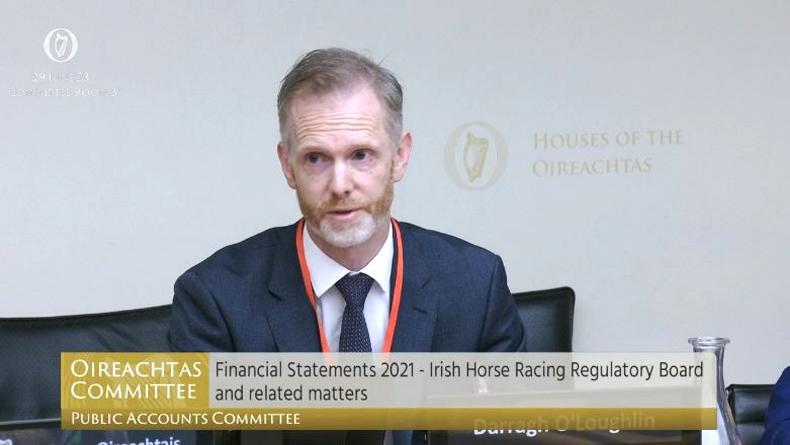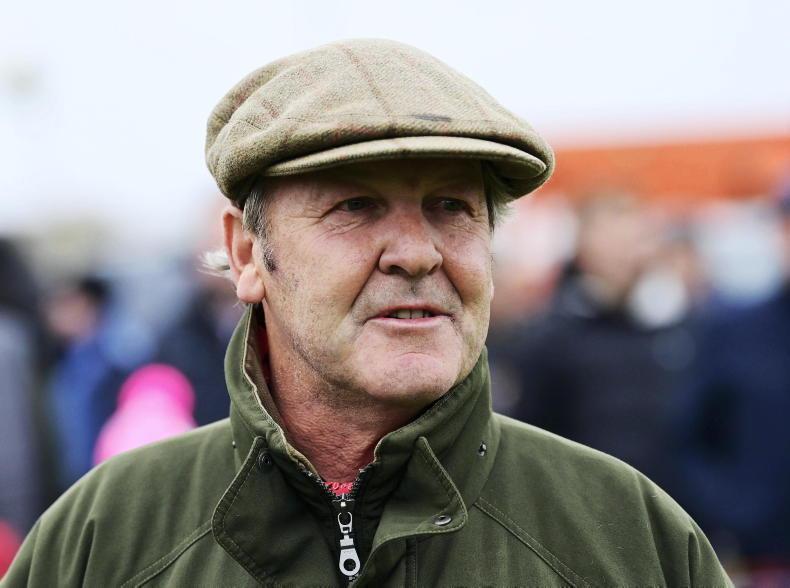INCREASED transparency in the Irish Horseracing Regulatory Board’s operations is one of several priorities for the organisation over the next four years, according to CEO Darragh O’Loughlin, after a new IHRB statement of strategy was launched yesterday for 2024 to 2027.
Under five strategic pillars in the 16-page document, the regulator has outlined plans to enhance its welfare programmes for horses and humans in the industry, as well as attempting to improve consistency in terms of stewarding.
There is an aim to “continue to refine the equine anti-doping programme and implement the Suann report recommendations”, while monthly integrity statistics are set to be published in a bid to “increase visibility and understanding” of its regulatory activities.
In a shift from previous practice, future disciplinary hearings will be opened to the media at some stage in 2024, as the IHRB refines its investigation process “to ensure robust and efficient case management”.
O’Loughlin told The Irish Field: “We want to be more transparent in terms of letting people see what we do. As part of this strategy, we will be moving towards holding our referral and appeal hearings in public by opening them up to the media.
“We’re quite transparent now and always issue detailed decisions, but that’s not the same as a live report of proceedings. Other regulatory bodies - whether that be the Veterinary Council of Ireland, Irish Medical Council or the Law Society of Ireland - all hold their hearings in public by default.
“Obviously if there are sensitive matters and health matters being discussed there can be an application to hold those hearings in private, but, by default, they are reported on in the press as open hearings. That additional transparency will add greater understanding of how these processes work.”
On whether the IHRB will need additional funding to execute the wider strategic plan, O’Loughlin said: “This is an ambitious strategy. The ongoing support of the Department of Agriculture, Food and the Marine and of Horse Racing Ireland will be critical to the success of the plan. Of course, there are elements of this plan that will require additional investment.
“Within the plan, we have said we want to continue to refine our equine anti-doping programme and implement the recommendations from Dr Craig Suann’s report. As we have said before, there is a significant ongoing investment required to raise our testing levels up to what is required by the Suann report.
“We have huge IT investment ambitions. We want to really improve our systems and get best-in-class information systems to support our operations on raceday, our decision making and our reporting. There is a lot of capital investment involved there.
Collaborative work
“Other elements of the plan will also require investment above what we currently have in our resource base, and - where possible - we have identified where we’ll collaborate and partner with other organisations, whether it be HRI, Equuip or the Department.
“For example, we are looking at CPD models for licence holders, welfare initiatives for licensees, sustainability strategies with HRI and the traceability of thoroughbreds, which is very much in the hands of the Department but we will play our part on that.”
Noted in the report is an ambition to “assert a strong independent identity as the racing regulatory body, including through a new brand image and a clear communications strategy to foster greater awareness across the industry and the public of the duties and functions of the IHRB.”
On implementing this new brand image, O’Loughlin explained: “When we talk about asserting a strong independent identity in this plan, it means being abundantly clear in all of our communications with the public, licensees and stakeholders that we are the racing regulatory body.
"We are an independent entity charged under legislation with making and enforcing the rules of racing, and our roles are quite clear. We are a regulatory body, we are not a promoting body, we are not a club. It’s about making that very clear to everyone who works here and to everyone we interact with.”
On the wider implementation of the plan, he added: “It will be an approach of uncompromising integrity, relentlessly focussing on safety and welfare, as well as continual professionalisation in our approach so we are the best racing regulator that we can be.
Values set
“I hold myself to high standards and I hold the team to high standards. I expect we all do the same between each other. We have six clear values: professionalism, integrity, excellence, respect, accountability and safety. This is an organisation that will be expected to live up to those values on an ongoing basis. We have an obligation to make this an organisation we’re proud to work for because I think this is a place we should be proud to work for.”
The IHRB is set to carry out case reviews and sanction audits to “promote consistency”, with this being a basis for education and training for stipendiary and raceday stewards.
On whether this means the IHRB will stick with its existing non-centralised stewarding model until at least 2027, O’Loughlin said: “There is no plan at this stage to move to the fully professional model that some people have described but what we are doing under this new strategy is having regular seminars where all the raceday stewards, who are volunteers - and we must respect that - work for the day with our stipendiary steward and review footage, decisions and races together.
“The aim is to achieve a consistency in decision making. It’s almost like CPD for our stewards. We have a lot of very professional people who know racing well and are prepared to give us their time on a voluntary basis - there’s a lot of knowledge and experience there that we don’t want to lose - but by getting them to work together they will recognise that they are part of a bigger organisation and team.
“It ensures there is a shared understanding of what the key issues are and how rules ought to be enforced, as well as more guidelines around sanctions for particular breaches. With this, I think we will achieve more consistency in our approach across the various race meetings.”
O’Loughlin also confirmed that the controversial delay to CCTV being rolled out across all Irish racecourses was completed by the end of March this year.


 This is a subscriber-only article
This is a subscriber-only article
 It looks like you're browsing in private mode
It looks like you're browsing in private mode












SHARING OPTIONS: